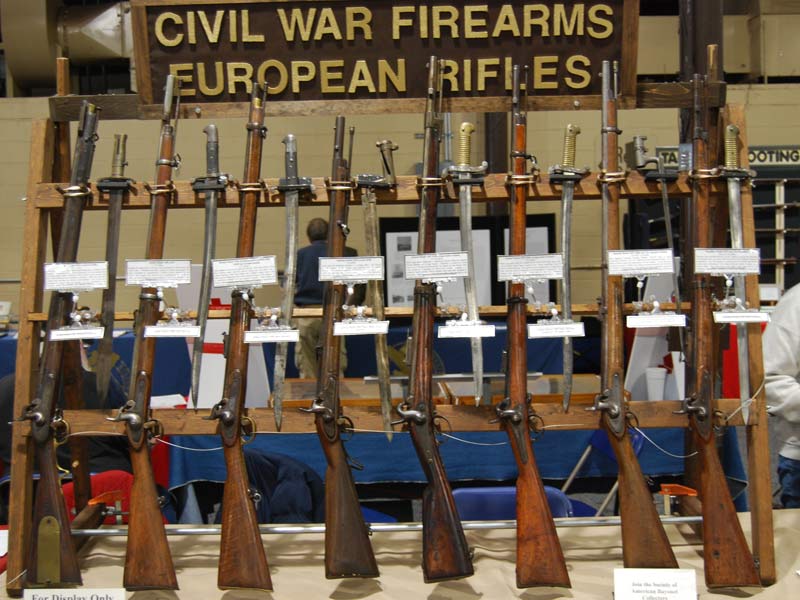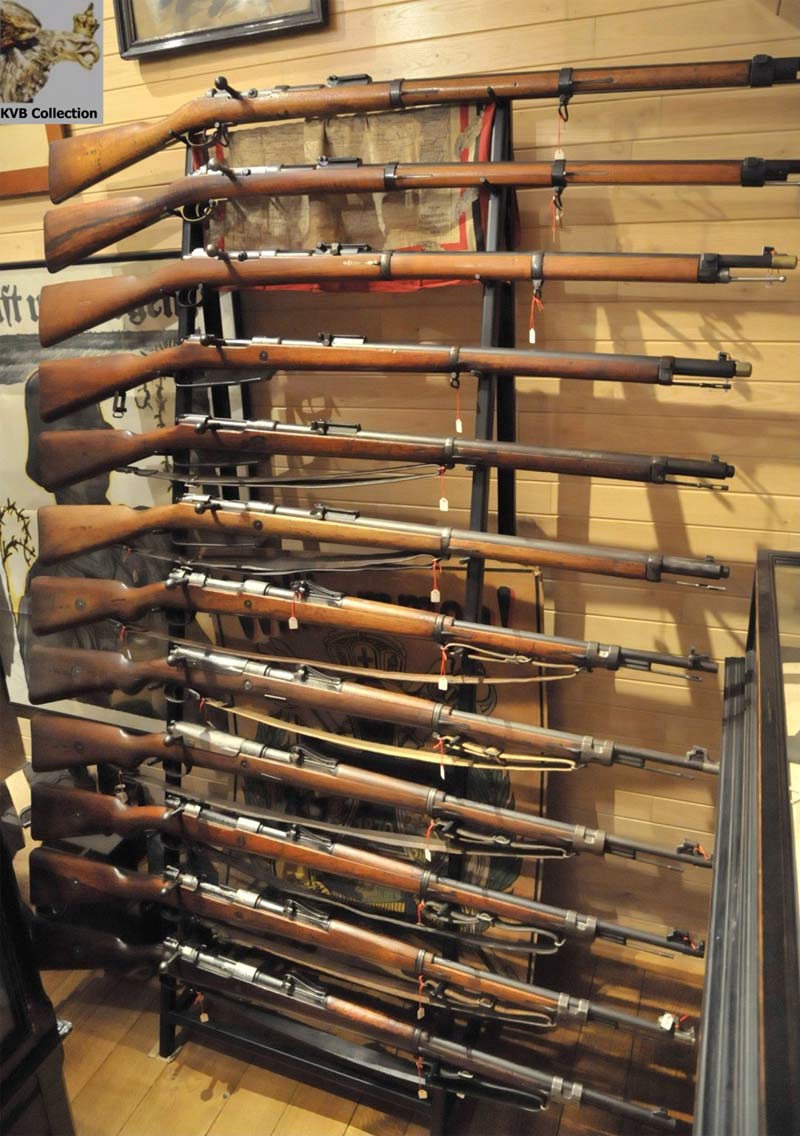There is an apt saying, “I don’t know art, but I know what I like.” This may explain why some individuals prefer Remington over Monet—and today, it also explains why some collectibles are displayed like fine art. This is certainly the case for those who may appreciate the work of “Western artist” Frederic Remington, yet can see the beauty in a vintage Remington rifle.
For firearms collectors, there are differing opinions on how the items should be stored. One school of thought is that guns should be locked away in a fireproof safe—and only taken out sparely. Others get the pleasure as much from admiring collectible firearms as actually shooting them.

Neither opinion is wrong of course, or even mutually exclusive. There are likely those who care to display some of their collectible firearms while locking away others.
Wall Hangers
In our era of TV shows, YouTube channels, and even Facebook Groups questioning the value of certain firearms, the term “wall hanger” has taken on a rather negative connotation. It often suggests that a firearm that is hung on the wall is somehow not of great value.
Those collectors who enjoy displaying their antique weapons would certainly disagree. Just because a rifle or handgun is on the wall doesn’t mean it isn’t something unique or special. In fact, one would only need to consider the countless arms literally hanging on walls in art museums around the world.
Moreover, the “great houses” of Europe (think Downton Abbey) for generations had walls adorned with antique small arms. In fact, during the Victorian Era, the demand was so great for medieval arms and armor that high-quality replicas were produced—ushering in the first era of “reproductions.” Though not as valuable as pieces from a few centuries earlier, like most antiques these are now collectible in their own right.

How to Display Collectible Firearms
There is an art of sorts in creating a display, and one has only to browse the various collector groups on Facebook to see that some do it far better than others. This is true of all collectibles. Some people are so obsessed with building a collection and acquiring new pieces that the presentation is completely lost. It is thus not uncommon to see rare firearms worth hundreds, perhaps even thousands of dollars hanging on a wall while resting on a little more than a couple of nails.
Likewise, there are those who find that leaning a weapon in the corner is a “good enough” display.
Yet, for those who appreciate the presentation, there is no shortage of mounts, racks, and display cases of all sizes available for sale. All of this is of course at the owner’s discretion. Among the most common DIY solution are wooden pegs or dowels that can be mounted to the wall, while building a reasonable rifle/gun rack is something even those with minimal woodworking skills can take on.

Some will go further, placing items in glass cabinets or display cases.
With some effort, a home display can easily become “museum-worthy” and allow a firearm to be appreciated even when it isn’t at the range.

Accessorizing The Collection
Another consideration in how a collection is displayed is in how it is “accessorized.” There are those who are interested in firearms and yet might not care at all about the history or origins. For others, antique firearms are a connection to the past and thus could be part of a much larger collection of objects.
When seeing a collection of antique small arms that is displayed with other period-correct objects—such as holsters, mounts, scopes, and even military uniforms—it can make a bold statement, and even provide some context that is lost when it is just a rifle or two hanging on the wall.

Taking It on the Road
Some may only have a spot on the shelf for a prized position, while others may have entire rooms dedicated to their collections. This can say as much as the means of the individual as their appreciation of the firearms. Likewise, some will be secretive, and only a few close friends and relatives may even know there is such a collection.
For others, it is about sharing their passion for firearms with the world.
This is why many of the larger collectible shows—including the Baltimore Antique Arms Show, the New England Antique Arms Show, and the Ohio Civil War and Artillery Show among others—now regularly hold contests for best displays. This is an opportunity for attendees of these events to see items rarely ever even encountered in a museum.

Such displays at these shows can make even fairly common pieces suddenly seem all the more notable with the right presentation and accessories—and perhaps much more than an extremely rare weapon that is just placed on a rack or table.
Protecting the Collection
For those who opt to display their firearms, there are some important considerations. The first is ensuring that it is relatively secure when not locked in an actual gun safe. This means that children shouldn’t have easy access to the guns and that ammunition is never stored near the firearms.
A secure room, perhaps with an alarm system and/or security cameras should be considered. Depending on the state or city, trigger locks may be legally required—even if they impact the presentation.
The safety of the collection is also important, and not just from theft or misuse.
Firearms, and the various accessories, need to be protected from direct sunlight, smoke, dust, and humidity. Many collectors may take the view that they are just temporary caretakers of history and that great efforts should be taken to ensure that an antique flintlock from the American Revolution will be here for the “tri-centennial” and beyond.
To that end, collectible firearms should be treated like fine art. This can ensure that the items retain their monetary value.
This may mean rarely shooting them—a point that not everyone will agree with—and proper cleaning, as well as handling. Extremely rare guns should get the “white glove” treatment, meaning that when handled, it should only be with gloves to protect them from oils and dirt on the hands. An air purifier and dehumidifier are recommended, especially if the collection is in a basement or other part of the house that experiences high humidity or is dust prone.
As with other antiques, items should be inspected to ensure that rust isn’t forming and that critters aren’t nesting within the barrels or other mechanical parts. Dust should be kept in check, hence the air purifier, while the choice of materials should be considered. Wood and the finishes can react badly to certain fabrics, and gun racks that are painted should be sealed so that the paint and its chemicals can’t leach into the wooden stocks.
All of the efforts to preserve these antique weapons can be an art unto itself—from the proper display to ensuring that it is properly cared for. But like fine art and other collectibles, it should be about the enjoyment it brings.


